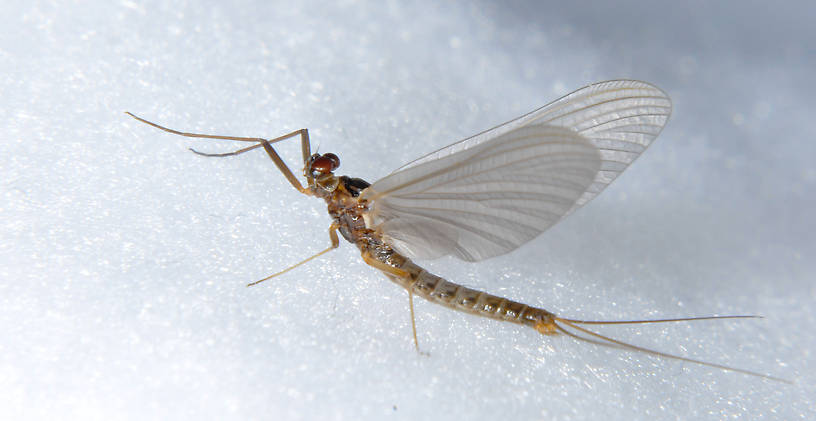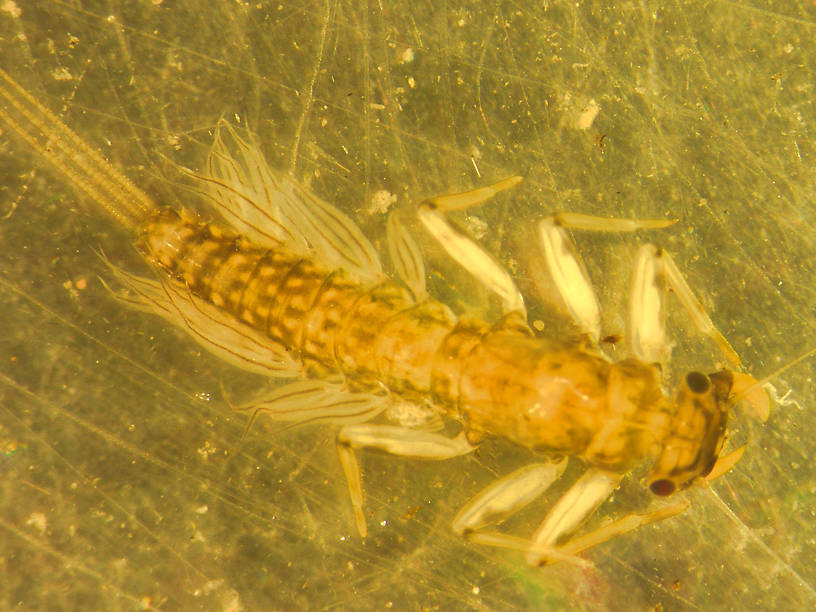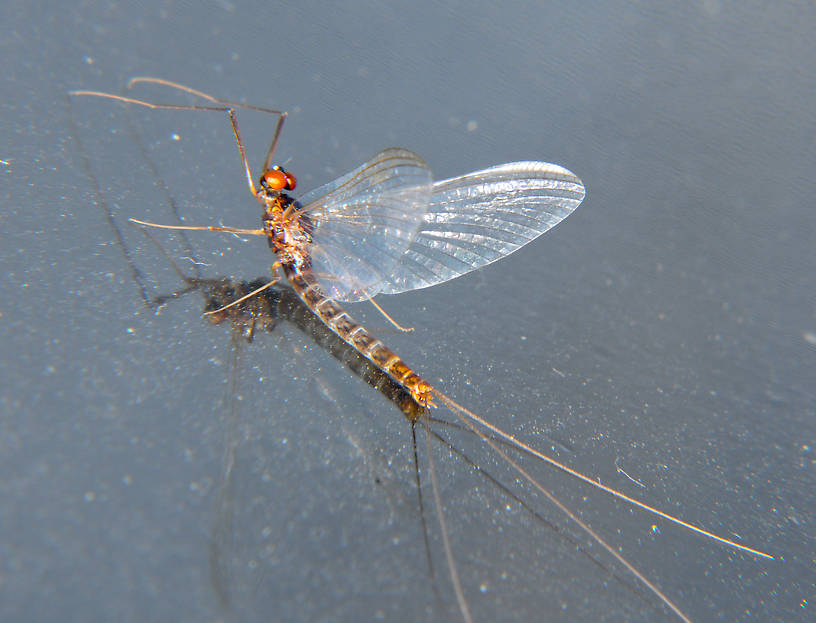
Salmonflies
Pteronarcys californica
The giant Salmonflies of the Western mountains are legendary for their proclivity to elicit consistent dry-fly action and ferocious strikes.
Featured on the forum

With a bit of help from the microscope, this specimen keys clearly and unsurprisingly to Hydropsyche.

Troutnut is a project started in 2003 by salmonid ecologist Jason "Troutnut" Neuswanger to help anglers and
fly tyers unabashedly embrace the entomological side of the sport. Learn more about Troutnut or
support the project for an enhanced experience here.
Large Slate-Winged Mahogany Duns
This common name refers to only one species. Click its scientific name to learn more.
Mayfly Species Paraleptophlebia bicornuta
These are sometimes called Large Slate-Winged Mahogany Duns.
This important Western species is one of the few mayflies outside the Ephemeridae family to possess large tusks on the front of its head. It is also one of the largest species of Paraleptophlebia.
P. bicornuta is often reinforced by simultaneous hatches of the more common Paraleptophlebia debilis. The two duns appear virtually identical to the naked eye, though bicornuta usually has an edge in size.
Paraleptophlebia bicornuta is by far the widest distributed tusked species, though there are others. Telling the tusked species apart is very difficult and even entomological texts are largely ambiguous on the characters that differentiate them. Distribution records are probably the most reliable way for anglers to know with any probability what they are looking at. Check out the Paraleptophlebia packii and Paraleptophlebia helena hatch pages for more distribution information.
P. bicornuta is often reinforced by simultaneous hatches of the more common Paraleptophlebia debilis. The two duns appear virtually identical to the naked eye, though bicornuta usually has an edge in size.
Paraleptophlebia bicornuta is by far the widest distributed tusked species, though there are others. Telling the tusked species apart is very difficult and even entomological texts are largely ambiguous on the characters that differentiate them. Distribution records are probably the most reliable way for anglers to know with any probability what they are looking at. Check out the Paraleptophlebia packii and Paraleptophlebia helena hatch pages for more distribution information.

You wonder sometimes how certain insects get their common names. This one is called the 'mahogany dun' for some unknown reason.

This species is interesting because it is common in lakes as well as streams. It is one of the last species of the year to emerge in western Montana. Adults have been collected as late as October 15 weather permitting.
See 2 more specimens...


